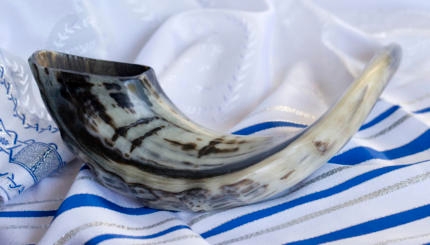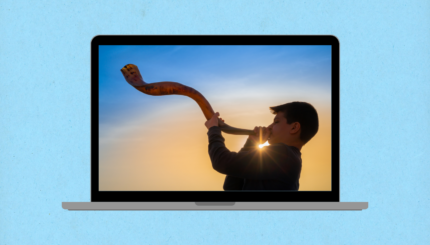At the end of this article the author associates Yom Kippur with mourning. While the rituals are similar, Yom Kippur is not normally viewed as a period of mourning and the association of the two reflects the author’s opinion.
This article is excerpted from Entering the High Holy Days. It is reprinted with permission from the Jewish Publication Society.
The explicit connection between Rosh Hashanah and Yom Kippur is made for the first time in the Tosefta (edited c. 300 C.E.): "All are judged on Rosh Hashanah and the verdict is issued on Yom Kippur" (T. Rosh Hashanah 1. 13).
Rabbi Yohanan, a second century Sage, teaches that three books are open on Rosh Hashanah: one for the completely righteous, one for the completely wicked, and one for those in between, that is, average human beings. The first two books are sealed on Rosh Hashanah; the last is kept in suspension until Yom Kippur so that "if they do well, they are inscribed in the Book of Life and if they do not do well, they are inscribed in the Book of Death" (B. Rosh Hashanah 16b). The period of time from the first day of the month to the 10th eventually came to be known as the "Ten Days of Penitence" and thus links them together.
With the destruction of the Second Temple, the Yom Kippur rituals associated with that institution could no longer be performed. Although rituals atoning for the impurities of the Temple were not necessary, the people still needed to atone for their own sins, both those against God and those between themselves and their fellows. In fact, the absence of the Temple rendered the problem of attaining atonement all the more acute. The story of Rabbi Yohanan ben Zakkai and Rabbi Joshua illustrates the void left by the destruction:
"[T]hey beheld the Temple ruins. ‘Woe is us!’ cried Rabbi Joshua, ‘that the place where the iniquities of Israel were atoned for is now laid waste!’ ‘My son,’ replied Rabbi Yohanan, ‘do not be grieved. We have another atonement as effective as this. And what is it? Acts of loving‑kindness.’"
Ritually, the power of atonement was now vested in the Day of Atonement itself. As always, teshuvah (repentance) was required before any sin could be atoned, but for the most severe sins atonement was "suspended until the Day of Atonement which then atones" (M. Yoma 8.8). But it was now made clear that sins between human beings could only be atoned if "one pacified one’s fellow" first (M. Yoma 8.9).
It was during this post‑destruction period that the liturgy of Yom Kippur was developed, including the recitation of five daily services, something that was done on other fast days and that may reflect practices already in existence before the destruction (M. Ta’anit 4.1). Rabbinic teaching also spelled out the specific prohibitions of Yom Kippur for each individual. Although fasting remained the basic method of "afflicting one’s soul," prohibitions were added against washing, anointing with oil, wearing shoes, and having sexual relations (M. Yoma 8.1) – prohibitions that are also associated with mourning practices. Thus, the Sages were attempting to eliminate all pleasures on that day, for Yom Kippur, like all fasts, is considered a time of mourning,
Rosh Hashanah
Pronounced: roshe hah-SHAH-nah, also roshe ha-shah-NAH, Origin: Hebrew, the Jewish new year.
Yom Kippur
Pronounced: yohm KIPP-er, also yohm kee-PORE, Origin: Hebrew, The Day of Atonement, the holiest day on the Jewish calendar and, with Rosh Hashanah, one of the High Holidays.


